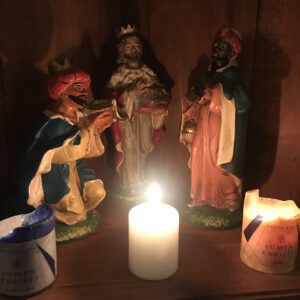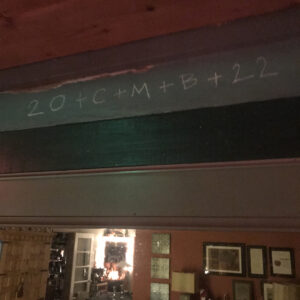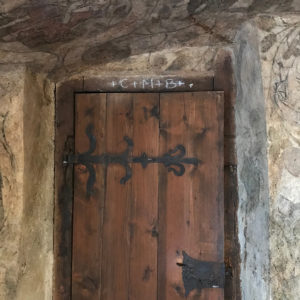It is Epiphany today, this Sixth of January, the day the Magi are said to have arrived at the stable in Bethlehem to see the newborn child. We’ve had six days of Christmas in the old year and now, six in the new. With Epiphany, the Twelve Days of Christmas come to a close, and we won’t see them again until next December, when this new year is old. Thus one year connects to the next through the bridge that is Christmas.
Many of you will be taking out the Christmas tree this weekend, and some of you have already packed everything away. As for us in this house, we follow the old tradition of keeping the Yuletide season going through January, to Candlemas Eve. Not “Full Christmas,” mind you –– the Santas and other such decorations will soon wend their ways into the closet ’til next Christmas. But we’ll keep the candles burning and we’ll keep the carols playing and we’ll keep the tree inside and illuminated as long as it stays supple and watered. It is just getting to the point of smelling wonderful and we are too much in love with Christmas to send it on its way just now. Candlemas Eve presents a more logical transition, anyway. At that point, the Wheel of the Year clicks another notch, away from Midwinter and toward the first stirrings of Spring as February brings Candlemas and Groundhog Day and St. Brigid’s Day: Brigid, the Bridge from winter to spring.
This is all to say that we welcome you to join us in keeping Yuletide going in your home, too, if you’ve not yet had enough of it. There is good historical and traditional precedent to doing so. Ah, but here is another thing we’ll be doing this Epiphany: inscribing the lintel above our door, in chalk, with an Epiphany blessing: a combination of the year with the initials of the three Magi (C for Caspar, M for Melchior, B for Balthasar), punctuated by crosses. We’ll do this here at our home, and we’ll do it at the family home, too, when next we are there. All who are gathered will take turns writing the inscription on the lintel above the door. This year’s will read 20+C+M+B+23.
Each year, my silent prayer outside in the cold night air is that no one will be missing when we next gather to do this. There the inscription stays, all the year through if the weather be fine. And though Christmas be gone, still the inscription reminds us of Christmas’s presence as we pass each day through that portal. The inscription is a magic charm of sorts, protecting the house and those who pass through that doorway, harboring the goodwill and spirit of Old Father Christmas. It’s a tradition we’ve seen a great deal of evidence of in our travels through Austria and Germany and Switzerland.
Finally, I stayed up very late last night working via the Internet with family near and far on recording and editing the newest episode of the Stay Awake Bedtime Stories series that I host for the Jaffe Center for Book Arts. I had told you about this in the previous post to this blog. Well, the video is done. In this newest episode, my cousin Marietta reads The Legend of Old Befana by Tomie de Paola, while her sister Cammie plays la Befana and Seth and my cousins Larry and Al play the Three Kings. I invite you now to Stay Awake with Marietta Falconieri & Family as Marietta tells the tale of Old Befana, who travels throughout Italy on the Eve of the Epiphany, as the Fifth of January becomes the Sixth. In fact, la Befana must be traveling through the sky right now, as I write this! Click here to watch.
And at our online shop, the Twelve Days Sale continues but it is over on Saturday. Find reduced prices on many of our handmade nutcrackers and pyramids and nativities from Germany, and on many of our Mexican nativity sets, too. It’s our first real sale (no discount code, just a proper sale) and once Saturday has passed, it’s back to regular prices, so if you’ve had your eye on something festive, perhaps for next Christmas… take a look: it may very be on sale right now. Click here to shop the sale.



